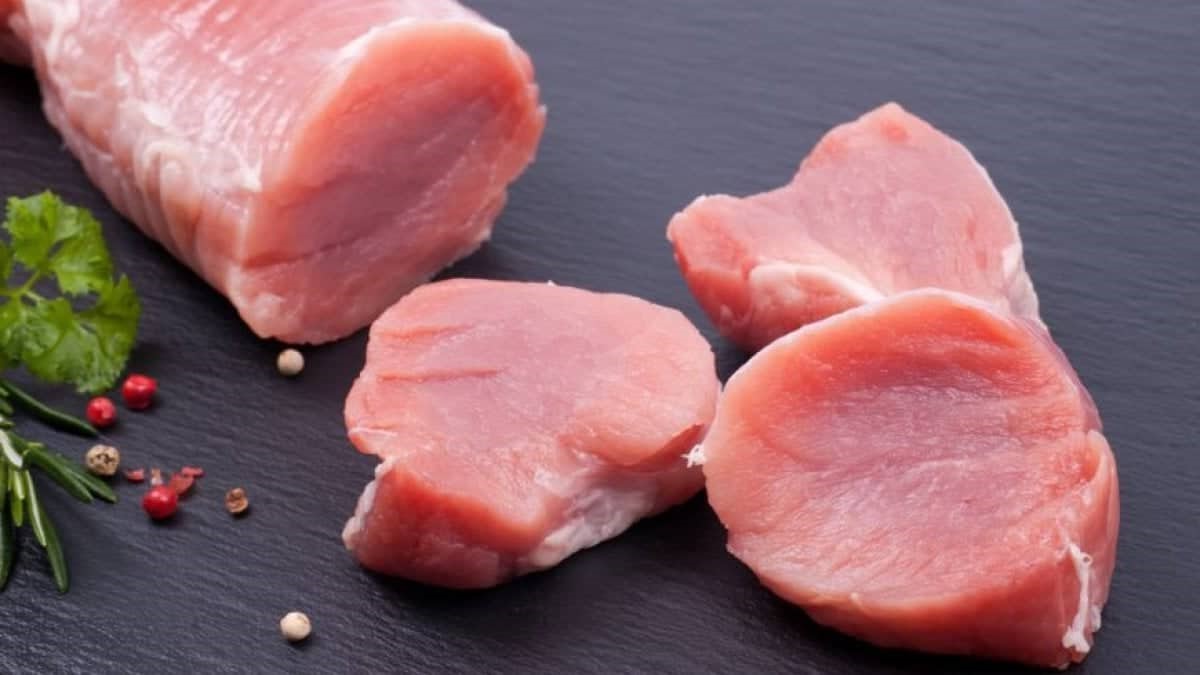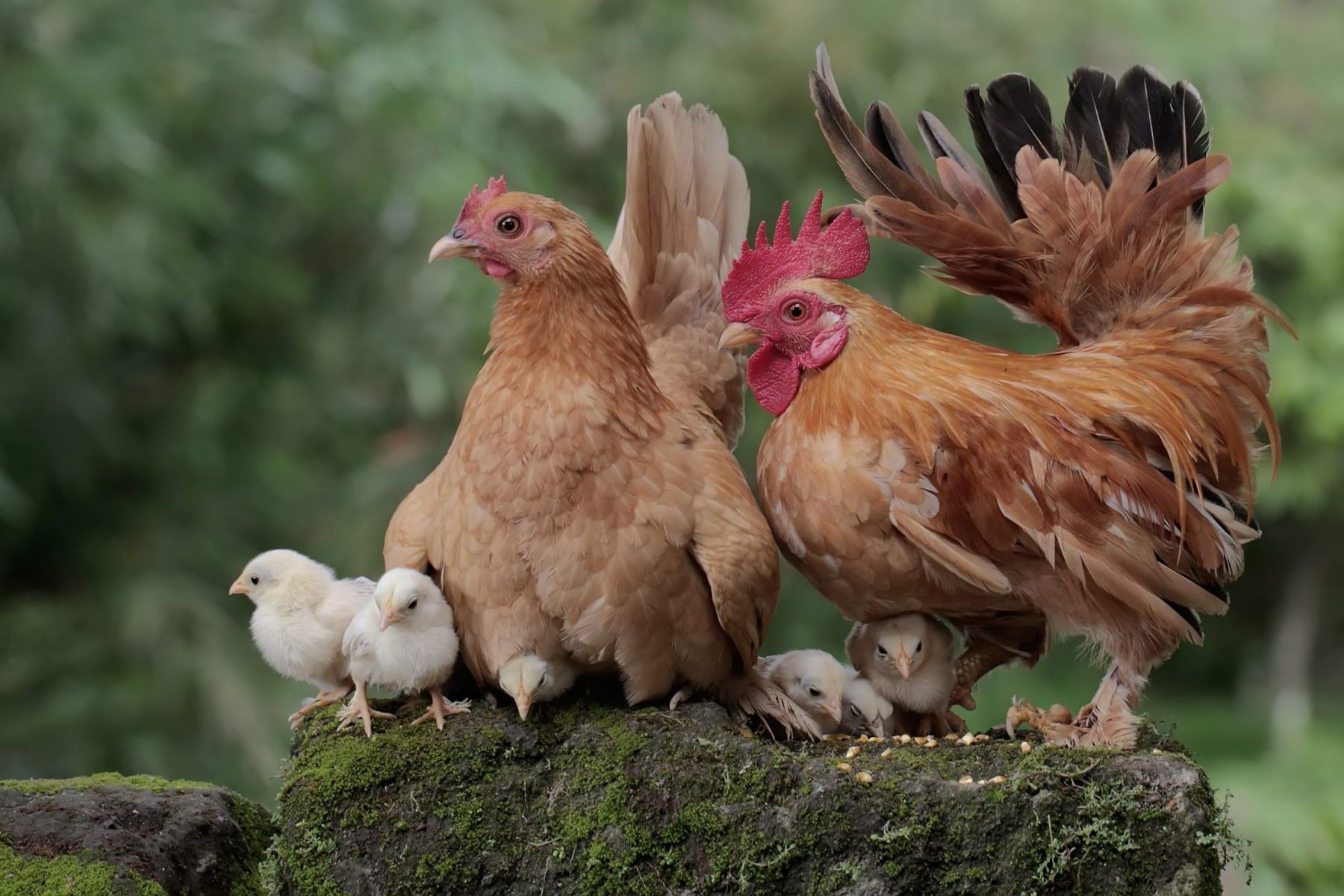Home>Food and Cooking>How To Tell If Pork Is Bad


Food and Cooking
How To Tell If Pork Is Bad
Published: March 2, 2024
Learn how to determine if pork has gone bad with these essential tips for food safety and cooking. Keep your kitchen and meals safe with our expert advice.
(Many of the links in this article redirect to a specific reviewed product. Your purchase of these products through affiliate links helps to generate commission for Noodls.com, at no extra cost. Learn more)
Table of Contents
Signs of Spoiled Pork
Identifying spoiled pork is crucial for ensuring food safety and preventing potential health risks. Pork is a highly perishable meat, and when it spoils, it can pose serious health hazards if consumed. Here are the key signs to look for when determining if pork has gone bad:
Read more: How To Tell If Shrimp Is Bad
Foul Odor
One of the most reliable indicators of spoiled pork is a pungent, unpleasant odor. Fresh pork typically has a mild, slightly sweet smell. However, if the pork emits a strong, putrid odor, reminiscent of ammonia or sulfur, it is likely spoiled. Trust your sense of smell; if in doubt, it's best to discard the pork.
Unusual Color and Texture
Visually inspect the pork for any abnormal changes in color and texture. Fresh pork should have a pinkish-red hue, and the surface should appear moist but not slimy. If you notice any discoloration, such as grayish or greenish patches, or if the texture feels excessively slimy or sticky, these are clear indications of spoilage.
Abnormal Consistency
When handling pork, pay attention to its consistency. Fresh pork should feel firm and slightly springy to the touch. If the meat feels excessively mushy, slimy, or unusually tough, it may have deteriorated and should be discarded.
Presence of Mold
The presence of mold on pork is a definite sign of spoilage. Mold can appear as fuzzy patches or irregular spots on the surface of the meat. If you notice any mold growth, it's essential to discard the pork immediately, as consuming mold-contaminated food can lead to adverse health effects.
Read more: How To Tell If Mushrooms Are Bad
Unpleasant Taste
If you have any doubts about the quality of pork, it's advisable to cook a small portion and taste it before consuming a larger serving. Spoiled pork will often have a rancid or off-putting taste, which is a clear indication that it should not be eaten.
By being vigilant and attentive to these signs, you can effectively determine if pork has spoiled and take the necessary steps to ensure food safety. Promptly disposing of spoiled pork is crucial to preventing foodborne illnesses and maintaining a healthy diet.
Smell Test
The sense of smell plays a pivotal role in discerning the freshness of pork. When conducting a smell test on pork, it's essential to be attuned to the subtle nuances of its aroma. Fresh pork exudes a faint, slightly sweet scent, characteristic of its natural state. However, as pork begins to spoil, distinct changes in its odor become apparent.
Spoiled pork emits a pungent, off-putting smell that is often described as foul, rancid, or reminiscent of ammonia or sulfur. This unpleasant odor is a clear indication of bacterial growth and the breakdown of proteins in the meat. The presence of these compounds generates the distinct, repulsive scent that signals spoilage.
When assessing the smell of pork, it's important to trust your olfactory senses. Take a moment to inhale the aroma, paying attention to any sharp or overpowering notes that deviate from the expected mild scent of fresh pork. If the odor is notably strong, unpleasant, or acrid, it is likely an indication of spoilage.
In some cases, spoiled pork may also emit a musty or moldy smell, particularly if mold has begun to develop on the surface of the meat. This moldy odor is a clear warning sign that the pork has deteriorated and should not be consumed.
It's important to note that the smell test is a reliable method for detecting spoiled pork, but it should be used in conjunction with other indicators of spoilage, such as changes in color, texture, and the presence of mold. By incorporating multiple sensory assessments, including the smell test, you can confidently determine the freshness of pork and make informed decisions regarding its suitability for consumption.
In summary, the smell test is a valuable tool for identifying spoiled pork. By recognizing the distinct odors associated with spoilage, you can safeguard against the consumption of compromised meat and prioritize food safety in your culinary endeavors.
Color and Texture
The visual and tactile assessment of pork is an integral aspect of determining its freshness and edibility. When inspecting pork for signs of spoilage, paying close attention to its color and texture can provide valuable insights into its condition.
Fresh pork typically exhibits a vibrant pinkish-red color, indicative of its natural state. This coloration is attributed to the presence of myoglobin, a protein responsible for the pigmentation of meat. However, as pork begins to spoil, noticeable changes in color may occur. Discoloration, such as the appearance of grayish or greenish patches on the surface of the meat, is a clear indication of spoilage. These irregular hues signal the presence of bacteria and the breakdown of proteins, rendering the pork unsuitable for consumption.
In addition to color changes, alterations in the texture of pork can also signify spoilage. Fresh pork should have a moist surface, but it should not feel excessively slimy or sticky. When running your fingers over the meat, it should exhibit a firm yet slightly springy consistency. However, spoiled pork may present with an abnormal texture, such as excessive sliminess or stickiness. These textural irregularities are indicative of bacterial growth and the deterioration of the meat's quality.
Furthermore, the presence of mold on pork can significantly impact its color and texture. Mold growth often manifests as fuzzy patches or irregular spots on the surface of the meat, leading to a distinct change in both appearance and feel. The development of mold indicates that the pork has been compromised and should be promptly discarded to prevent potential health risks.
By meticulously assessing the color and texture of pork, individuals can effectively gauge its freshness and identify any indications of spoilage. This visual and tactile examination, when combined with other sensory assessments, such as the smell test, enables individuals to make informed decisions regarding the safety and suitability of pork for consumption.
In summary, the color and texture of pork serve as critical indicators of its freshness and potential spoilage. By remaining attentive to these visual and tactile cues, individuals can uphold food safety standards and mitigate the risk of consuming compromised pork.
Expiration Date
The expiration date serves as a fundamental reference point for assessing the freshness and shelf life of pork products. When evaluating the expiration date of pork, it is essential to recognize its significance in determining the optimal period for consumption and storage.
The expiration date, often labeled as the "use by" or "best before" date, is provided by the manufacturer or producer based on rigorous quality assessments and food safety standards. This date is a reflection of the anticipated timeframe during which the pork product is expected to maintain its peak quality, flavor, and nutritional integrity. By adhering to the expiration date guidelines, consumers can make informed decisions regarding the purchase, consumption, and storage of pork, thereby minimizing the risk of exposure to spoiled or compromised meat.
It is imperative to note that the expiration date should be regarded as a reliable indicator of the freshness and safety of pork. Beyond this date, the quality of the pork may begin to deteriorate, increasing the likelihood of spoilage and potential health risks. As such, it is advisable to exercise caution and refrain from consuming pork products that have surpassed their expiration date.
In addition to the expiration date, it is essential to consider the storage conditions and handling practices when preserving the freshness of pork. Proper refrigeration, adherence to recommended storage temperatures, and appropriate packaging are pivotal factors in extending the shelf life of pork products. By attentively managing these aspects, consumers can optimize the longevity of pork and minimize the risk of premature spoilage.
Furthermore, it is crucial to recognize that the expiration date is not a static parameter and may vary depending on the specific type of pork product. For instance, fresh cuts of pork, such as chops or tenderloin, may have a different expiration date compared to processed pork products, including sausages or bacon. Therefore, it is essential to meticulously review the expiration date on each pork product and adhere to the recommended guidelines to ensure optimal quality and safety.
In summary, the expiration date serves as a pivotal reference point for consumers, guiding them in making informed decisions regarding the freshness and suitability of pork products. By acknowledging the significance of the expiration date and integrating it into their purchasing and consumption practices, individuals can uphold food safety standards and enjoy pork products at their peak quality.
Read more: How To Tell If A Relation Is A Function
Storage Conditions
Proper storage is paramount in preserving the freshness and safety of pork products. By adhering to recommended storage conditions, individuals can mitigate the risk of premature spoilage and maintain the quality of pork for an extended period. The following guidelines outline essential storage practices to uphold the integrity of pork:
Refrigeration:
Upon purchasing pork products, it is imperative to promptly refrigerate them to inhibit bacterial growth and maintain optimal freshness. Fresh cuts of pork, including chops, roasts, and tenderloin, should be stored in the refrigerator at a temperature of 40°F (4°C) or below. Additionally, it is advisable to place the pork in the coldest section of the refrigerator, such as the meat drawer, to ensure consistent temperature regulation.
Packaging:
Proper packaging is instrumental in safeguarding pork from contamination and exposure to air, which can accelerate spoilage. When storing pork in the refrigerator, it should be securely wrapped in airtight packaging, such as plastic wrap or resealable bags, to prevent moisture loss and protect it from potential cross-contamination with other foods.
Freezing:
For prolonged storage, freezing pork is an effective method to preserve its freshness. Prior to freezing, it is essential to package the pork in airtight, freezer-safe containers or vacuum-sealed bags to minimize the risk of freezer burn and maintain its quality. When stored at 0°F (-18°C) or below, frozen pork can remain safe for consumption for an extended duration, ensuring minimal deterioration in flavor and texture.
Read more: How To Tell If A Coach Purse Is Real
Organization:
Maintaining an organized refrigerator and freezer is crucial in optimizing the storage of pork products. By designating specific areas for raw pork, separate from other food items, individuals can prevent potential cross-contamination and uphold food safety standards. Additionally, labeling and dating packaged pork can facilitate efficient inventory management and enable timely consumption to minimize waste.
Thawing:
When preparing to use frozen pork, it is essential to employ safe thawing practices to preserve its quality. Thawing pork in the refrigerator is the recommended method, as it allows for gradual defrosting while preventing the growth of harmful bacteria. Alternatively, pork can be thawed in airtight packaging under cold running water or in the microwave using the defrost setting, with immediate cooking following the thawing process.
By conscientiously adhering to these storage conditions, individuals can optimize the longevity and quality of pork products, ensuring that they remain safe for consumption and retaining their inherent flavor and nutritional value. Prioritizing proper storage practices is integral in promoting food safety and enhancing the overall culinary experience.
Common Foodborne Illnesses from Spoiled Pork
Consuming spoiled pork can lead to the onset of various foodborne illnesses, posing significant health risks to individuals. The presence of harmful bacteria and pathogens in spoiled pork can result in the development of foodborne illnesses, with symptoms ranging from mild gastrointestinal discomfort to severe and potentially life-threatening conditions. Understanding the common foodborne illnesses associated with spoiled pork is essential for promoting awareness and preventing adverse health outcomes.
-
Salmonellosis:
Salmonella bacteria are a prevalent cause of foodborne illness linked to the consumption of contaminated pork. Symptoms of salmonellosis include diarrhea, abdominal cramps, fever, and vomiting. In severe cases, the infection can spread beyond the gastrointestinal tract, leading to more serious complications. Proper cooking and storage of pork are crucial in mitigating the risk of salmonellosis. -
Trichinosis:
Trichinella spiralis, a parasitic worm, can infect pigs and subsequently pose a risk to human health if pork is consumed undercooked or raw. Symptoms of trichinosis include muscle pain, swelling of the face, fever, and weakness. Ensuring that pork is cooked to the recommended internal temperature is essential in preventing trichinosis. -
E. coli Infection:
Escherichia coli (E. coli) bacteria, particularly strains such as E. coli O157:H7, can contaminate pork and lead to foodborne illness. Symptoms of E. coli infection include severe abdominal cramps, diarrhea (often bloody), and vomiting. Proper hygiene and thorough cooking of pork are critical in reducing the risk of E. coli contamination. -
Listeriosis:
Listeria monocytogenes, a bacterium found in contaminated pork products, can cause listeriosis, a serious infection with symptoms such as fever, muscle aches, nausea, and diarrhea. Pregnant women, older adults, and individuals with weakened immune systems are particularly susceptible to severe complications from listeriosis. -
Food Poisoning:
Consumption of spoiled or contaminated pork can lead to general food poisoning, characterized by symptoms such as nausea, vomiting, diarrhea, and abdominal pain. Bacterial pathogens, such as Clostridium perfringens and Staphylococcus aureus, can proliferate in improperly stored or cooked pork, contributing to food poisoning incidents.
By being mindful of these common foodborne illnesses associated with spoiled pork, individuals can prioritize safe food handling practices, thorough cooking methods, and vigilant inspection of pork products to minimize the risk of exposure to harmful pathogens. Additionally, seeking prompt medical attention in the event of suspected foodborne illness is crucial in addressing symptoms and preventing potential complications. Prioritizing food safety measures is integral in safeguarding against the adverse effects of consuming spoiled pork and promoting overall well-being.












